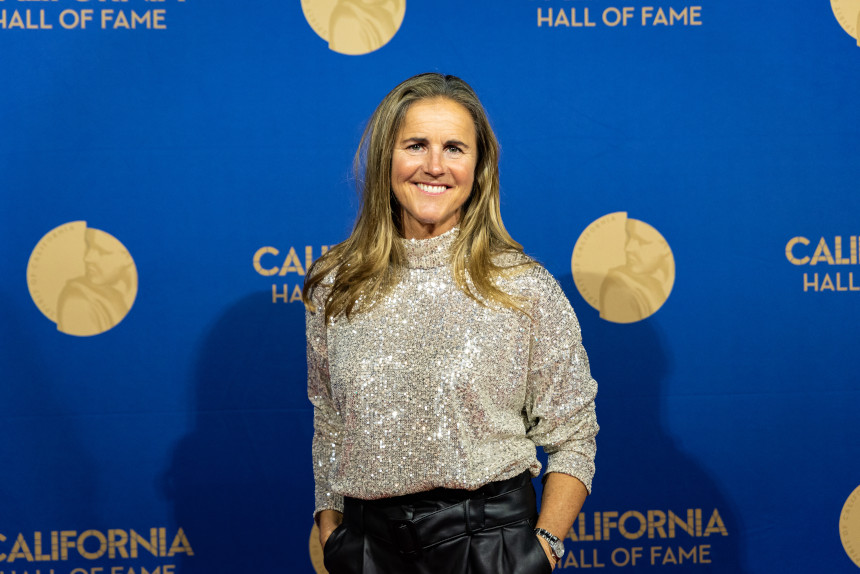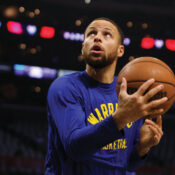The U.S. Women’s National Soccer Team did it again. In a dominant performance where they outscored their opponents throughout the tournament by a margin of 26-3, the USWNT captured their fourth Women’s World Cup championship on July 7. That remarkable run parallels a prior achievement, when 20 years ago this week, the team won their second World Cup on July 10, 1999 in front of the largest crowd ever assembled for a women’s sporting event. The 1999 Women’s World Cup had a seismic impact on the women’s game and drove the creation of leagues and the introduction of millions of young girls into the sport. That final game still reverberates through all of women’s sports.
Going in to the 1999 World Cup, everyone knew that the U.S. had fielded a formidable team. After winning the first Women’s World Cup in 1991, the returning American squad took third in 1995; though that loss was offset a bit by the team taking the first ever women’s soccer gold medal at the 1996 Olympics, the ’95 Cup loss still stung. Considered among the favorites in the 1999 field, the team still felt they had something to prove. However, the U.S. had a considerable advantage in that after playing the previous Cups in China and Sweden, they’d be competing this time on home soil.
The 1999 U.S. Team boasted a roster of some of the greatest to ever play the game. Among the best was Kristine Lilly, who played for the team an astonishing 23 years and appeared in 352 international games for the U.S. There was Julie Foudy, the co-caption and eventual captain who would rack up an eventual 274 appearances. There was goalkeeper Briana Scurry, who would eventually capture two gold medals in addition to a World Cup victory. There was Brandi Chastain, on her way to a date with destiny. And then, of course, there was Mia Hamm.
There’s no other way to put it: Mia Hamm is an icon. Her list of achievements is filled with so many superlatives that it almost sounds like an exaggeration. She played for a UNC college team that won four consecutive NCAA titles. She held the record for most goals scored (by a woman or a man) in international competition until 2013. Hamm would play on two gold and one silver medal Olympic team. She still holds the record for most career assists on the Women’s National Team (144), and is third on the list of number of games played (276). She’s in the National Soccer Hall of Fame, three state-level Halls of Fame, and was the first woman inducted into the World Football Hall of Fame. As the first bona fide American female soccer superstar, she served as an indelible presence and an peerless ambassador for the game who is still, 15 years after her retirement, popular enough to appear in new commercials in 2019.
When the team took the pitch in 1999, it was against a field of 16 teams. Among them was China, whom the U.S. had beaten 2-1 to take the ’96 Olympic gold. On their path to the semi-finals, the U.S. overcame Nigeria, North Korea, Denmark, and Germany. In a semi-finals match on the Fourth of July, they defeated a dangerous Brazilian team 2-0. The stage was set for a final against, of course, China. The Rose Bowl in Pasadena served as the venue, with a record crowd of 90,185 in attendance.
For over 90 minutes (regulation and additional stoppage time), neither team was able to get an advantage. A last minute press by China was staved off by the heroics of midfielder Lilly and Scurry, both of whom notched saves in the extra time. With nothing left of the clock, the game moved to a shoot-out. Five players from each side would take their alternating shots. Carla Overbeck, Joy Fawcett, and Lilly made the first three attempts for the U.S. Xie Huilin and Qui Haiyan made their shots for China, but Liu Ying’s attempt was saved by Scurry. Hamm scored, as did Zhang Ouying and Sun Wen. It all came down to Brandi Chastain. As Chastain’s shot went in for the victory, she did something that was fairly common for male players; in spontaneous celebration, she whipped off her jersey, revealing her sports bra. Chastain went to her knees, squeezing her fists in triumph, an image that instantly became emblematic of the win, the team, and the growing power of women in sports.
The influence in America was immediate. Interest in women’s soccer increased, causing an influx of girls to join the game. Current U.S. players like Carli Lloyd and Christen Press have commented how the 1999 final influenced them as young women and made them want to compete. A women’s professional soccer league was launched in the aftermath, but folded; a second attempt was unsuccessful as well. However, the National Women’s Soccer League successfully launched in 2012 and remains the longest-running professional soccer league for women in the United States.
Since the 1999 World Cup, the USNWT has remained in the upper echelon of the sport. They’ve never finished out of the top three in the World Cup, taking second in 2011 and winning the championship again in 2015 and this week. In the Olympics, they took the gold in 2004, 2008, and 2012 (the team finished fifth in the 2016 Olympics after getting ousted from the Knockout Round by Sweden 4-3 in a shootout).
Members of the World Cup Champion Team discuss Chastain’s Goal. (Uploaded to YouTube by ESPN FC)
Today, the USNWT are widely considered the best in the sport. Their ongoing success has led to calls (and even chants) for equal pay, as the women’s team is paid far less per game than the men’s national team (which, it should be noted, has never finished higher than eighth in World Cup play, nor won a soccer gold at the Olympics). The U.S. team’s swagger has drawn both praise and criticism, with midfielder/winger Megan Rapinoe serving as a lightning rod for both; politically outspoken and fearless both on the field and in interviews, Rapinoe’s ultimate response to her critics in this year’s World Cup was to win the Golden Boot (for scoring the most goals in the tournament) and the Golden Ball (for being best overall player in the tournament) on the way to leading her teammates to championship victory over a tough team from the Netherlands. The Silver Boot, for the second-highest number of goals scored, went to her teammate, forward Alex Morgan.
It remains to be seen what the legacy of the 2019 World Cup championship on the U.S. Team will be. Over 14 million people watched the match on Fox (a larger audience than last year’s men’s World Cup Final); an additional 1.6 million Americans watched the Spanish call of the match on Telemundo, and almost 300,000 more streamed it via Fox. So, obviously, the audience is there. Greater financial support and infrastructure for the women’s game exists today than in 1999, with a stable professional league and furiously active programs in the NCAA, school systems, and communities nationwide. If the impact of the 2019 team is anything at all like that of the 1999 squad, then we’ve really only begun to scratch the surface of what women’s soccer can continue to mean for both women’s sports and women in America.
Featured image: Former U.S. Women’s Soccer player Brandi Chastain in 2019. (Chris Allan/Shutterstock)
Become a Saturday Evening Post member and enjoy unlimited access. Subscribe now



